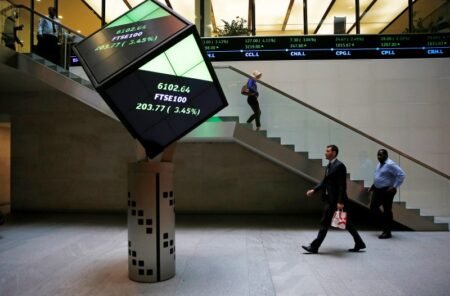- Fast-food franchisees in California fear diners will flock to Chili’s and Applebee’s to avoid price hikes.
- Limited-service restaurants are raising prices to offset the state’s $20 wage for fast-food workers.
- As a result, the price gap between fast-food and casual dining restaurants could narrow.
California recently raised its minimum wage for fast-food workers to $20, and franchisees raising prices to offset this fear they could send some diners into the arms of casual dining chains like Chili’s and Applebee’s.
These chains aren’t subject to the new minimum wage and, therefore, aren’t expected to raise prices as much. This could potentially cause the price difference between fast-food and casual dining restaurants to shrink.
The $20 wage applies to workers at limited-service restaurant chains — those where diners typically don’t get table service and pay for their food before eating it — with at least 60 locations nationwide.
Fast-food restaurants in California have been hiking prices to offset the wage, which is 25% above the state’s general minimum wage.
Though the legislation was enacted on April 1, some restaurants gradually raised prices to avoid the sticker shock of dramatically hiking prices from one day to the next.
Shane Paul, who owns seven Jack in the Box restaurants in San Diego, told BI he’d raised the prices at his restaurants by about 10% or 11% over the past six to 12 months in anticipation of the higher wages. In previous years, he generally put prices up by around 3.5% to 4%, he said.
Transactions at his restaurants “are already trending down,” he said.
Paul speculated some of the diners could be going to casual dining restaurants like Chili’s or Applebee’s instead, which he said had deals that meant diners could have a sit-down meal for “a dollar or two more than us.”
Harsh Ghai, who said he owns about 180 Burger King, Taco Bell, and Popeyes restaurants in California, expressed similar concerns.
He told BI that his price increases were already impacting restaurant sales and that he expected more diners to turn to grocery stores and Chili’s and Applebee’s instead.
“We’re gonna start to compete with them,” Ghai said, speaking about the casual dining restaurants.
In a typical year, Ghai’s restaurants put up their prices by between 2% and 3%, he said. But in the last 12 months, he’s raised prices by between 8% and 10% — largely just to reflect food inflation, he said. He can’t raise prices any further to absorb the higher wages because customers wouldn’t come back, he said.
Scott Rodrick, who owns 18 McDonald’s in northern California, told BI he had a “deep concern” that the new minimum wage “narrows the competitive gap” between different types of restaurants.
Rodrick said he’d increased prices at his restaurants by between 5% and 7% in the three months of 2024.
Executives at Kura Sushi, a sit-down Japanese chain with about 60 locations in the US, told analysts in early April that they thought the $20 wage would increase their value proposition as other chains keep increasing prices.
CEO Hajime Uba noted that Kura Sushi’s prices were getting “closer and closer and closer” to fast-food pricing.
Diners generally go to fast-food and casual dining restaurants for different occasions, Brian Vaccaro, a restaurant analyst at Raymond James, told BI.
Sit-down restaurants typically attract diners who want to “relax and rewind” with family and friends. In contrast, people generally go to limited-service restaurants for the speed and convenience, he said.
Wages could soar across the entire restaurant industry
Analysts say that it’s hard to predict exactly how diners’ habits will change in response to the price increases at fast-food chains. People could buy more groceries, choose fast-food value deals, or switch to different restaurants.
Still, some analysts do expect other employers in the state — like full-service restaurants and retailers — to start paying workers more so that they can stay competitive, which could ultimately mean other restaurants increase their menu prices, too.
Sal Vitalie, who owns The Garden Club, a restaurant in South San Francisco, told BI that he will “absolutely” have to raise his wages to compete with local fast-food chains.
Still, in some cases, Vaccaro noted that servers at mid-priced, full-service restaurant chains are likely to already make $30 or more an hour, including tips, so price hikes may just be a way off.
“If casual dining can hold prices and doesn’t see the upward labor pressure, it could receive some benefit as the gap between casual dining and limited service prices narrow,” Sharon Zackfia, a restaurant analyst at William Blair, told BI over email.
“But limited service will still be cheaper, and the key tenets of fast and convenient will remain a positive factor for demand at limited service for customers on the go,” she said.
Are you a fast-food worker excited about the new minimum wage? Or a franchisee or restaurant manager worried about how it will affect your business? Email this reporter at gdean@insider.com.
Read the full article here

















